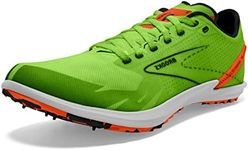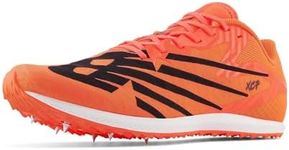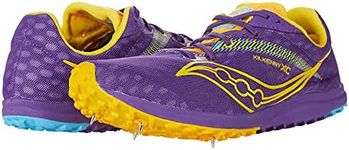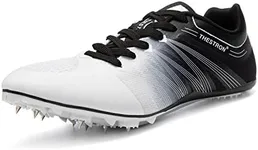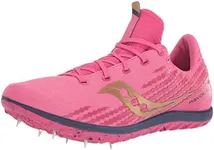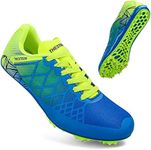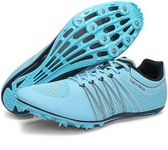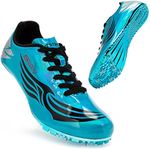Buying Guide for the Best Cross Country Spikes
Choosing the right cross-country spikes is essential for optimal performance and comfort during your runs. Cross-country spikes are designed to provide traction and stability on various terrains, including grass, mud, and gravel. When selecting the best pair for you, consider the following key specifications to ensure you get the perfect fit for your needs.Spike LengthSpike length refers to the length of the metal spikes on the bottom of the shoe. This is important because it affects the level of traction you get on different surfaces. Spike lengths typically range from 3mm to 15mm. Shorter spikes (3-6mm) are suitable for firmer, drier conditions, while longer spikes (9-15mm) are better for muddy, soft, or uneven terrain. Choose the spike length based on the typical conditions of your running courses.
Fit and ComfortFit and comfort are crucial for preventing blisters and ensuring you can run efficiently. Cross-country spikes should fit snugly but not too tight, allowing for some wiggle room for your toes. Look for shoes with a comfortable upper material that conforms to your foot shape. Try on different brands and models to find the one that feels the best for your foot type.
WeightThe weight of the shoe can impact your speed and endurance. Lighter shoes can help you run faster and feel less fatigued over long distances. Cross-country spikes are generally lightweight, but there can be variations. Shoes weighing between 5-8 ounces are common. If you prioritize speed, go for the lighter end of the spectrum. If you need more support, a slightly heavier shoe might be better.
DurabilityDurability refers to how well the shoes can withstand wear and tear over time. This is important because cross-country running involves rough terrains that can quickly damage less durable shoes. Look for shoes made with high-quality materials and reinforced stitching. Consider how often you run and the conditions you typically encounter to determine the level of durability you need.
TractionTraction is the shoe's ability to grip the ground, which is crucial for maintaining stability and preventing slips. The design of the outsole and the placement of the spikes contribute to traction. Shoes with aggressive tread patterns and well-placed spikes offer better grip on slippery or uneven surfaces. Choose a shoe with good traction based on the types of terrain you run on most frequently.
BreathabilityBreathability refers to how well the shoe allows air to circulate, keeping your feet cool and dry. This is important for comfort and preventing blisters. Shoes with mesh uppers or ventilation features are more breathable. If you run in hot or humid conditions, prioritize breathability to keep your feet comfortable.



